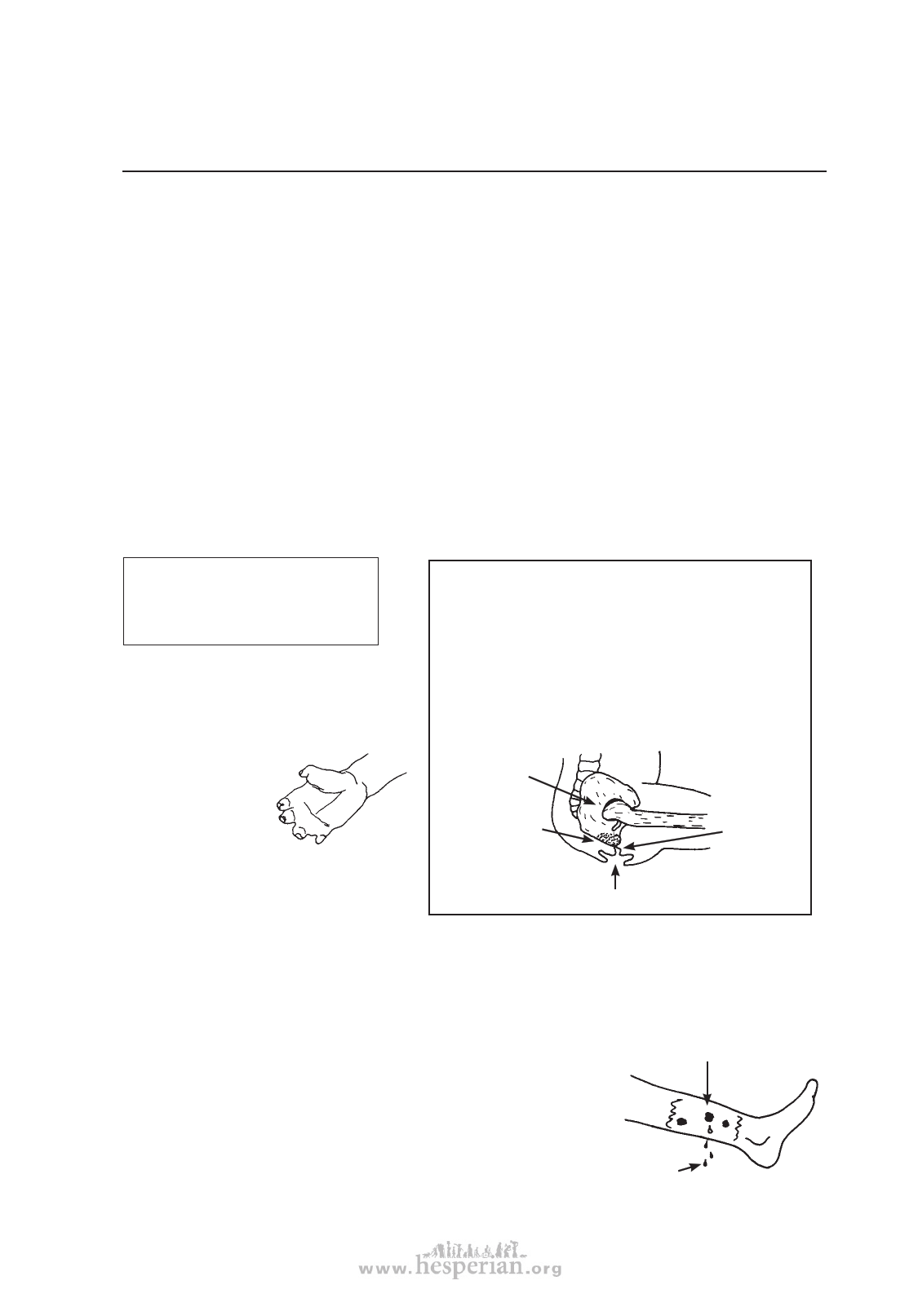
Bone Infections
Osteomyelitis
19CHAPTER
159
Bone infections are mostly a medical problem. Therefore we do not describe all of the
many types of bone infections or details of medical and surgical treatment.
Chronic (long-lasting) bone infections are fairly common in villages where persons go
barefoot and where injuries and illnesses that can lead to bone infections are frequent.
They can be caused by fungus, or by many different kinds of bacteria (including typhoid,
tuberculosis, and staphylococcus). Often these infections last for years, causing bone
destruction and severe disability.
Bone infections are a very common complication of injuries, burns, and pressure
sores in persons who have no feeling in their hands and feet. This includes persons with
spina bifida (see p. 173), spinal cord injury (p. 196), and leprosy (p. 222). Because the
person does not feel pain, often she does not rest, clean, or protect the injured area.
As a result, it becomes infected. Gradually the infection gets deeper until it reaches the
bone.
THROUGH PROPER EARLY CARE
OF SORES AND INJURIES, BONE
INFECTIONS CAN USUALLY BE
PREVENTED.
The loss of parts of
the body sometimes
seen in a person who
has leprosy (Hansen’s
disease) is not caused
by the leprosy germs.
It is caused by other
germs, which infect
the bone because of
injuries the person
gets that are not
cared for because
they do not hurt.
WARNING: Deep pressure sores that do not heal,
even after they are kept clean and no weight or
pressure has been put on them for months, may have
a bone infection. Bone infection is especially likely
if the sore reaches the bone, or if a small hole at the
bottom of the sore refuses to close and drains liquid
or pus. If you think there might be a bone infection,
get medical help if possible and go through all the
steps to treat it adequately.
hip bone
infected bone
pressure sore
small hole
deep in sore
Signs of chronic bone infection
• The skin near a bone has small, deep sores that heal and
then open again to drain pus. Gradually the affected area
gets bigger and new holes open.
• There may or may not be pain.
• The pus may or may not smell bad.
• Usually there is no fever—except sometimes at first or at
times when the infection gets into the blood.
• Often the infection will get better with antibiotics, but
keeps coming back.
• The affected bone may gradually become thicker as it is
destroyed inside and forms a new bony covering.
sores that heal but
keep coming back
pus